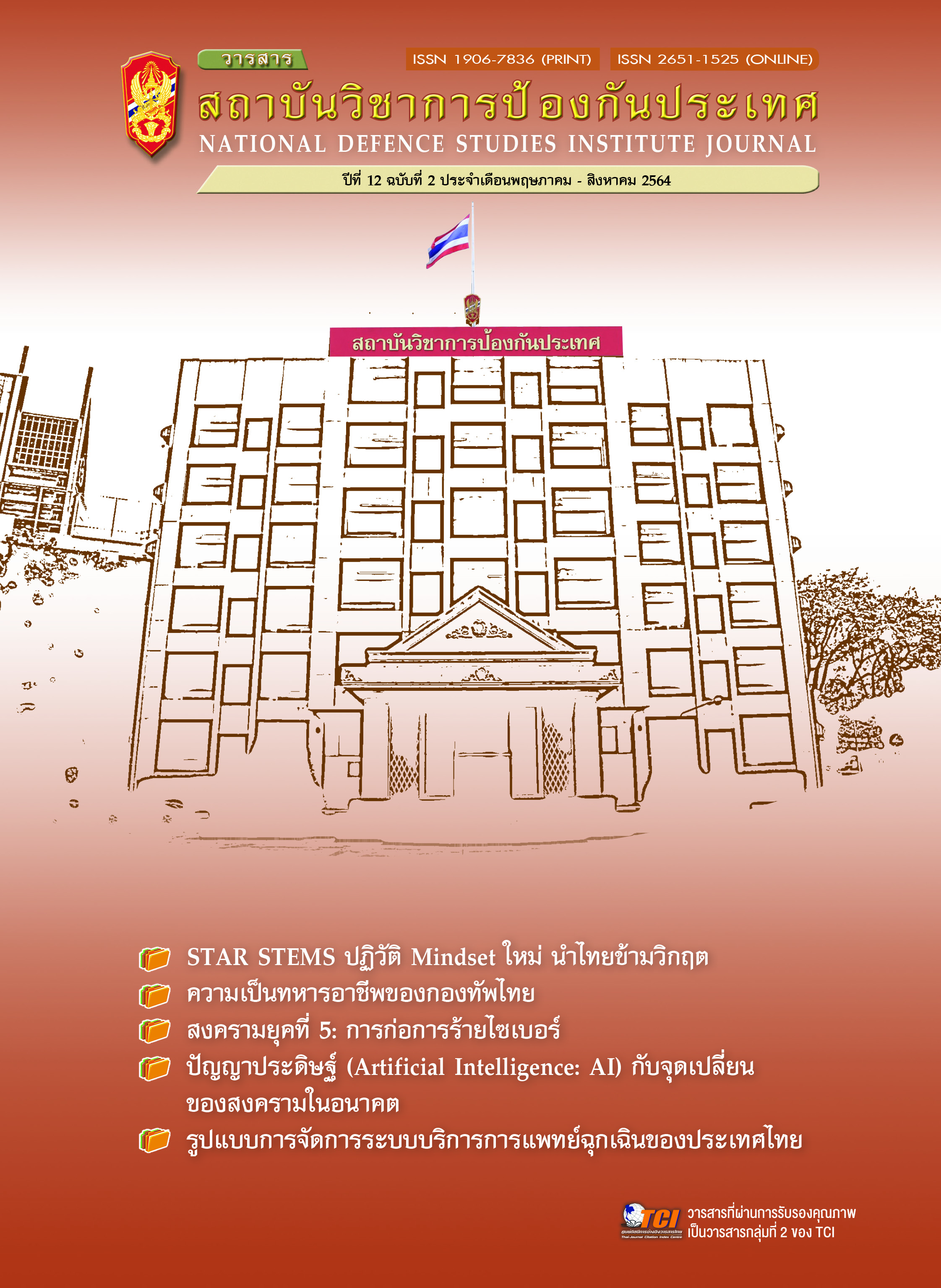Prison Health, A New Dimension of Thai Corrections to Social Security: Interaction in the Management of Prison Health Between Transgender Inmate and Correctional Officer
Main Article Content
Abstract
This article aims to present the interaction of health management in prisons between transgender inmates and correctional officers as well as to offer guidelines for health management in prisons suitable for transgender inmates under the concept of health prison, which is a new paradigm in the treatment of prisoners which meets international standards by using qualitative research regulations according to the concept of phenomenology. The data are collected from informal in-depth interviews with participant observations, from two groups of key informants: seven transgender inmates and five operational staff. The theoretical concepts used in the study consist of gender diversity concept, concepts related to prison society and power relations, concept of human rights of inmates and concepts related to health.
The findings show that the most important element in the prison is the dimension of humanity. Since the prison is directly related to humans with two important groups of people “inmates” and “correctional officers”, health management in prisons will have the highest efficiency and effectiveness depending on the interaction between them. In addition, the understanding of diversity and gender sensitivity of transgender inmates, which is different from male and female inmates, can affect the interaction of people from both sides.
Article Details

This work is licensed under a Creative Commons Attribution-NonCommercial-NoDerivatives 4.0 International License.
The articles, images, tables, graphs, written content, and opinions published in this journal are solely those of the authors and do not necessarily reflect the views or positions of the National Defence Studies Institute or its academic affiliates.
References
กรมราชทัณฑ์. (2536). คำสั่งเรื่องแนวปฏิบัติเกี่ยวกับ การควบคุมผู้ต้องขังชายที่แปลงเพศเป็นหญิงแนวปฏิบัติเกี่ยวกับการควบคุมผู้ต้องขังชายที่แปลงเพศเป็นหญิง.
_______. (2559). ห้าก้าวย่างแห่งการเปลี่ยนแปลงราชทัณฑ์. สืบค้นเมื่อ 20 สิงหาคม 2561, จาก http//www.correct.go.th/inctrad.fivesteps.html
กฤตยา อาชวนิจกุล, และกุลภา วจนสาระ. (2560). การขับเคลื่อน ‘คุกไทย’ สู่ ‘เรือนจำสุขภาวะ’. กรุงเทพฯ: โรงพิมพ์เดือนตุลา.
ฐิติยา เพชรมุนี. (2557). การเปรียบเทียบการปฏิบัติต่อผู้กระทำผิดในและนอกเรือนจำของกลุ่มประเทศอาเซียน (รายงานการวิจัย). กรุงเทพฯ: สถาบันเพื่อการยุติธรรมแห่งประเทศไทย.
นัทธี จิตสว่าง. (2541). หลักทัณฑวิทยา : หลักการวิเคราะห์ระบบงานราชทัณฑ์. กรุงเทพฯ: มูลนิธิพิบูลสงเคราะห์กรมราชทัณฑ์.
พัชรินทร์ คมขำ. (2551). ความต้องการดููแลสุขภาพของผู้ต้องขัง (วิทยานิพนธ์พยาบาลศาสตร์มหาบัณฑิตสาขาการพยาบาลเวชปฏิบัติครอบครัว). มหาวิทยาลัยธรรมศาสตร์. กรุงเทพฯ.
มนัส เกิดบัว. (2556). ปัจจัยที่มีผลต่อการกระทำผิดซ้ำของผู้ต้องขังเบี่ยงเบนทางเพศในเรือนจำพิเศษพัทยา ตำบลหนองปลาไหล อำเภอบางละมุง จังหวัดชลบุุรี (วิทยานิพนธ์รัฐประศาสนศาสตร์มหาบัณฑิต). มหาวิทยาลัยบูรพา. ชลบุุรี.
สุไลพร ชลวิไล. (2550). เพศไม่นิ่ง: ตัวตน เพศภาวะ เพศวิถีในมิติสุขภาพ. นครปฐม: โครงการจัดตั้งสำนักงานศึกษานโยบายสาธารณสุขสวัสดิการและสังคม คณะสังคมศาสตร์และมนุษยศาสตร์ มหาวิทยาลัยมหิดล.
สำนักงานคณะกรรมการสุขภาพแห่งชาติ. (2550). พระราชบัญญัติสุขภาพแห่งชาติ พ.ศ.2550. สืบค้นเมื่อ 18 สิงหาคม 2561,จาก http://www.dms.go.th/backend//untent/content_file/information_Center/Attach/25621124013609AM_17.pdf
Atabay, T. (2009). Handbook on Prisoners with Special needs. New York: United Nations.
Erving Goffman. (1989). Goffman’s concept of the Total Institution : Criticism and Revisions. New York: Springer.
Panal Reform International. (2559). ข้อกำหนดมาตรฐานขั้นต่ำแห่งสหประชาชาติว่าด้วยการปฏิบัติต่อผู้ต้องขัง ฉบับปรับปรุง (ข้อกำหนดแมนเดลา) คู่มือฉบับย่อ [Short Guide to the Nelson Mandela Rules (Revised Standard Minimum Rules)] (สถาบันเพื่อการยุติธรรมแห่งประเทศไทย, ผู้แปล). กรุงเทพฯ.
WHO. (2011). Health System : Improving Performance. Geneva: World Health Organization.


